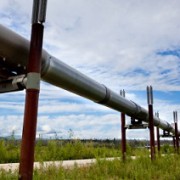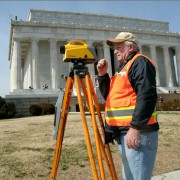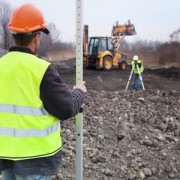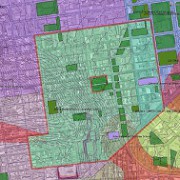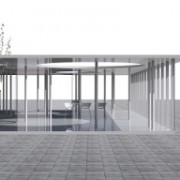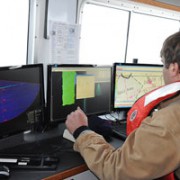How Modern Surveying Means Less Time Spent On Site
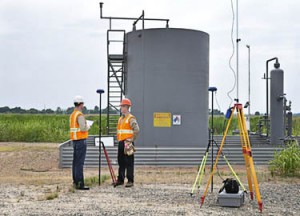 Technological advances in land surveying equipment and methods are transforming the industry by streamlining the surveying process and reducing the number of resources needed to complete projects, especially on the ground. Traditionally, field data collection has been a very hands-on process, whereby surveyors expend considerable time and resources on-site to manually map out areas and provide a basic blueprint for clients.
Technological advances in land surveying equipment and methods are transforming the industry by streamlining the surveying process and reducing the number of resources needed to complete projects, especially on the ground. Traditionally, field data collection has been a very hands-on process, whereby surveyors expend considerable time and resources on-site to manually map out areas and provide a basic blueprint for clients.
Now, armed with sophisticated technologies, like 3D scanning and modeling, modern GPS surveying tools, GIS mapping, and high-tech data collectors, some land surveyors are transforming the industry. The results – the field data collection process is significantly shortened and clients receive more detailed and accurate results, all the while with fewer resources, especially on site. Ultimately, these outcomes improve clients’ bottom line, expedite the survey life cycle and minimize the risk of costly errors and need for rework.
Which technologies should companies be looking for when it comes to field data collection?
GNSS Surveying. The Global Navigation Satellite System (GNSS) is the foundation for modern surveying. GNSS pulls data not only from the American global positioning service (GPS) but from other entities as well, creating even more accurate results. Historically, surveyors physically canvassed areas to plot coordinates and demarcate boundaries; everything was done manually and on-site. Using GNSS surveying equipment, surveyors can access geographic data points gathered by a network of satellites that rotate around the earth and collect positioning data on an ongoing basis. This switch has dramatically increased surveyors’ productivity and made their surveys much more accurate
High-Tech Data Collectors. In the past, collecting data was one of the most time consuming parts of the surveying process. While manually canvassing an area, surveyors would physically enter their data and sketches, often using a pencil and paper. High-tech field data collectors enable automatic entry of thousands of points of data into an online system. This process has revolutionized the surveying field by significantly reducing the number of people and the time it takes to complete a survey. In addition, automating the field data collection process minimizes errors caused by human entry.
GIS Mapping. Geographic information systems (GIS) are systems that store mapping information and attributes in digital form so that it can be easily accessed and analyzed. For surveyors, using GIS mapping is a powerful tool, because it helps provide a simple, visual context for what would otherwise be complex, spatial datasets. Further, GIS mapping allows data to be easily manipulated using a multitude of variables that can be layered over one another. GIS mapping information is stored in the cloud, so data can be accessed in real-time from the convenience of any device connected to the internet. This feature helps improve communications between surveyors and their clients and gives clients the ability to effectively manage projects on a daily basis from remote locations.
3D Scanning and Modeling. 3D scanning and modeling or “high definition scanning,” as it is sometimes called, is a process that uses advanced lasers to map an area in extremely high detail. Essentially, 3D scanning technologies capture image data points at an incredibly rapid pace to create a precise, almost life-like visual of the project area. Most importantly, 3D scanning technologies precisely map out coordinates to millimeter accuracy, thereby significantly improving the reliability of the survey itself. In turn, clients can make more informed decisions about their projects.
Selecting a surveyor with experience using these technologies can significantly improve a project’s bottom line, especially for Oil & Gas, Clean Energy and other companies, for whom surveying is an integral part of their business. To see how cutting-edge surveying technologies and techniques can help you save time and cut costs, get a no obligation quote today.

